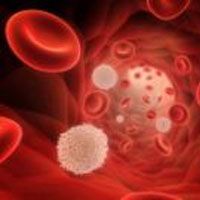Article
Bridging Anticoagulation for Patients with Atrial Fibrillation Who Are on Warfarin and Scheduled for Surgery
Author(s):
Study results show patients with atrial fibrillation who stopped taking warfarin before surgery received no benefit from temporary "bridging" with low-molecular-weight heparin. Patients who received no anticoagulation while off warfarin did not experience significantly more thromboembolic events, but they did experience significantly lower fewer incidents of serious bleeding.

A large randomized trial of atrial fibrillation (AF) patients who stopped taking warfarin before elective surgery found no benefit to temporary “bridging” with low-molecular-weight heparin. Indeed, patients who received no anticoagulation during their time away from warfarin did not experience significantly more thromboembolic events, but they did experience significantly lower fewer incidents of serious bleeding.
Arterial thromboembolism occurred in 0.4% of the 950 patients who received no bridging and in 0.3% of the 934 patients who received heparin (risk difference, 0.1 percentage points; 95% confidence interval [CI], −0.6 to 0.8; p=0.01 for non-inferiority of no bridging). Heparin use also failed to produce significantly lower rates of myocardial infarction, venous thromboembolism or death.
The incidence of major bleeding, on the other hand, did differ significantly between the 2 groups. Serious bleeds occurred in 1.3% of the no-bridging patients and 3.2% of the patients who received heparin (relative risk, 0.41; 95% CI, 0.20 to 0.78; p=0.005 for superiority of no bridging).
“Taken together, these findings show that there is a net clinical benefit in favor of a strategy of forgoing bridging, as compared with perioperative bridging with low-molecular-weight heparin,” the study authors wrote in The New England Journal of Medicine.
AF patients typically discontinue warfarin about 5 days before an elective procedure and start using it again once the operation is over and hemostasis is secure. It then takes 5 to 10 more days for them to get back to therapeutic levels of anticoagulation.
Using heparin to maintain some level of anticoagulation during that period has become a fairly popular strategy for reducing the risk of thromboembolic events for the 17% of all warfarin users who undergo an elective surgery in any given year. However, the authors of the new study wrote, there was never a large randomized trial to prove that temporary discontinuation of warfarin creates a major risk of thromboembolism or that temporary heparin use reduces that risk.
Several other types of studies have compared patients who did and did not receive bridging and found little evidence that the additional anticoagulation improves outcomes. For example, a meta-analysis of observational studies with a collective 12,278 patients found no significant difference in the rate of arterial thromboembolism (odds ratio[OR] with bridging, 0.80; 95% CI, 0.42 to 1.54). That study did, however, find that bridging was associated with significantly higher rates of major bleeding (OR, 3.60; 95% CI, 1.52 to 8.50).
“The rationale for the use of bridging anticoagulation therapy has been anchored on the premise that the associated higher bleeding risk was clinically acceptable because it would be offset by a lower risk of perioperative arterial thromboembolism,” wrote the authors of new paper.
“The findings from the trial as well as from nonrandomized studies suggest that the perioperative risk of arterial thromboembolism in patients with atrial fibrillation during interruption of warfarin treatment may have been overstated and may not be mitigated by bridging anticoagulation. Indeed, the mechanisms of perioperative arterial thromboembolism may be more closely related to factors such as the type of procedure and to intraoperative alterations in blood pressure. The premise that warfarin interruption leads to rebound hypercoagulability and that the milieu of the procedure confers a prothrombotic state, which in turn leads to arterial thromboembolism, is not supported by the results of this trial.”





